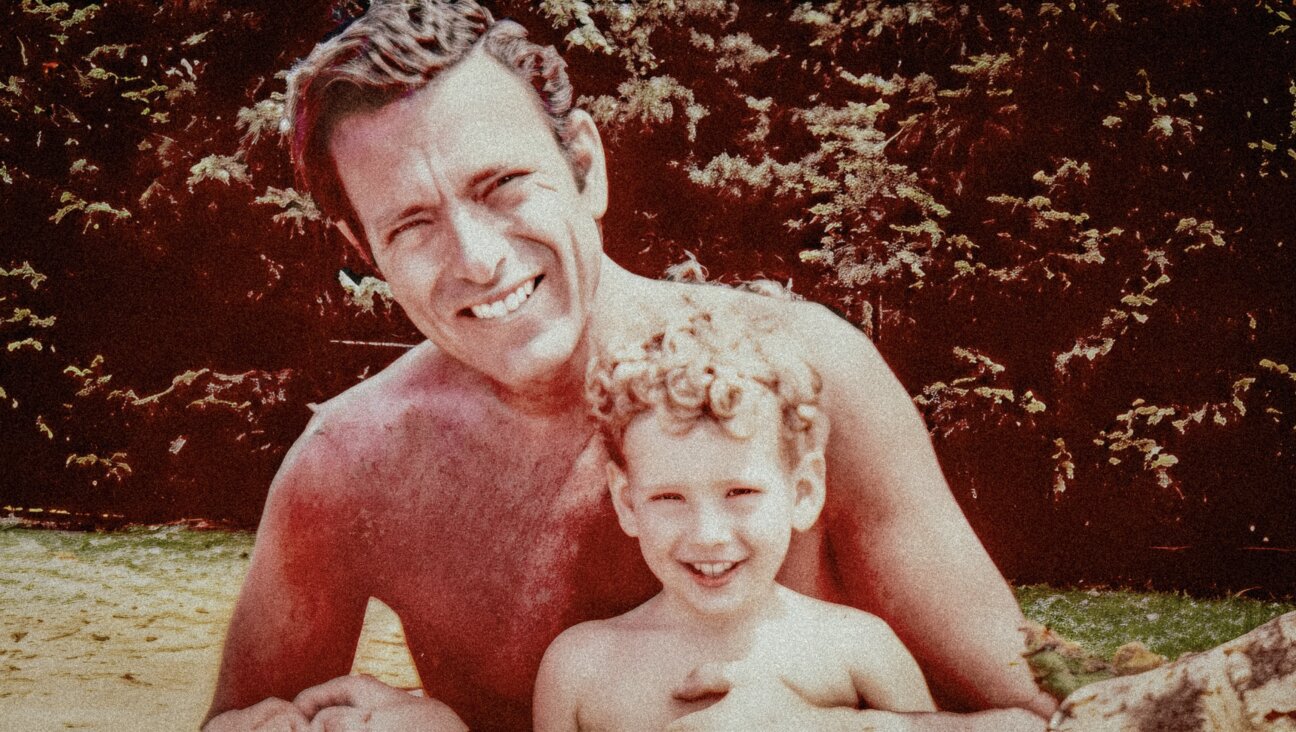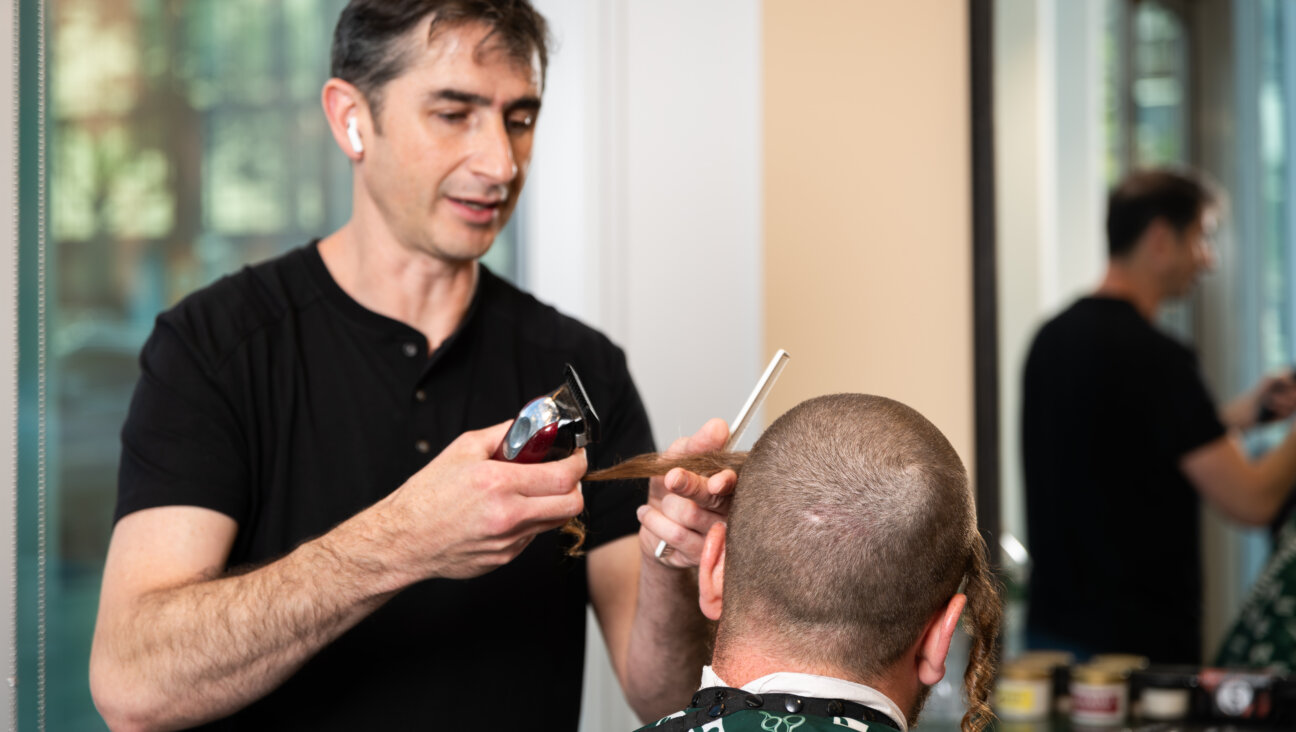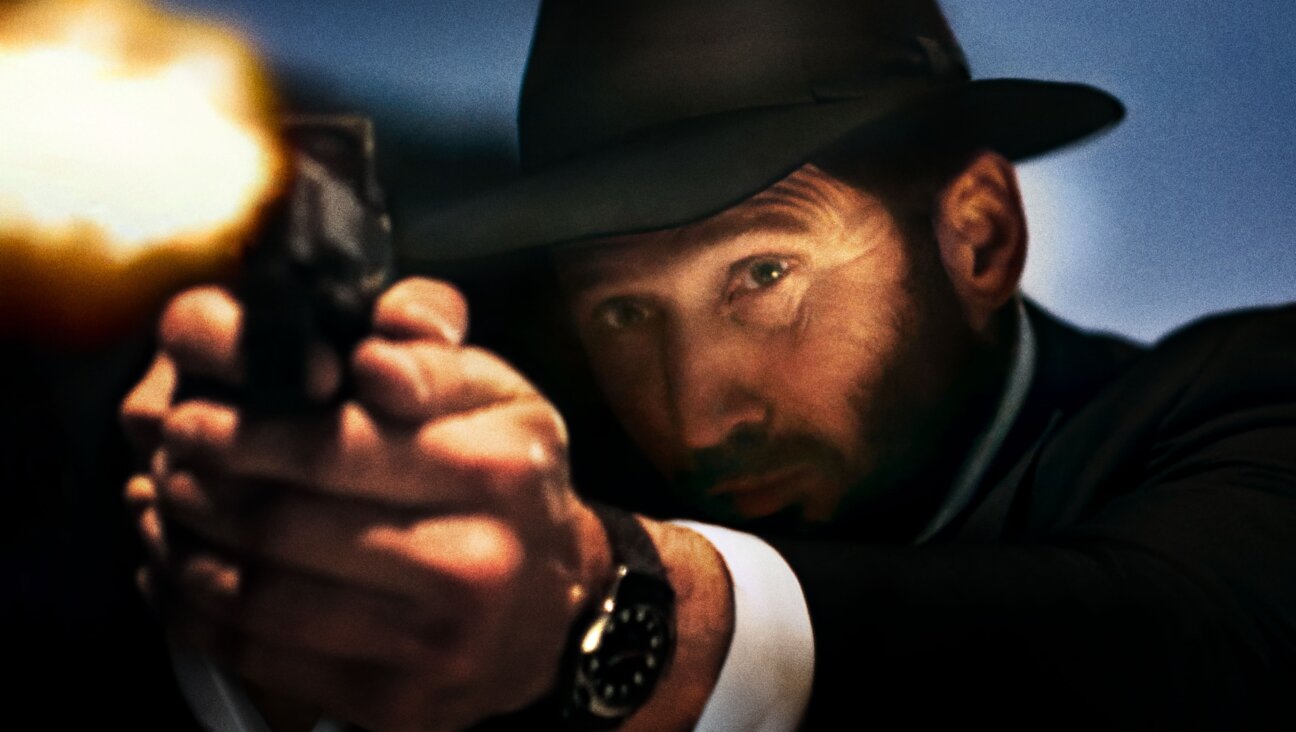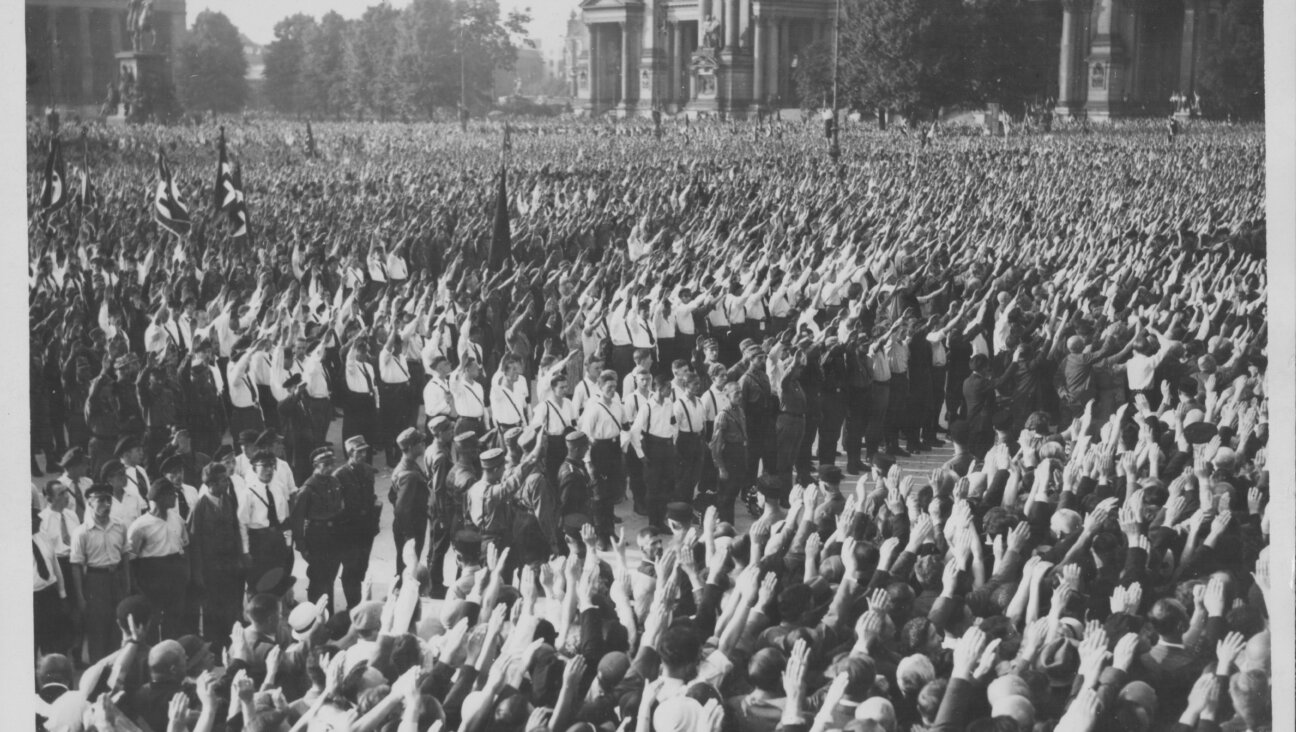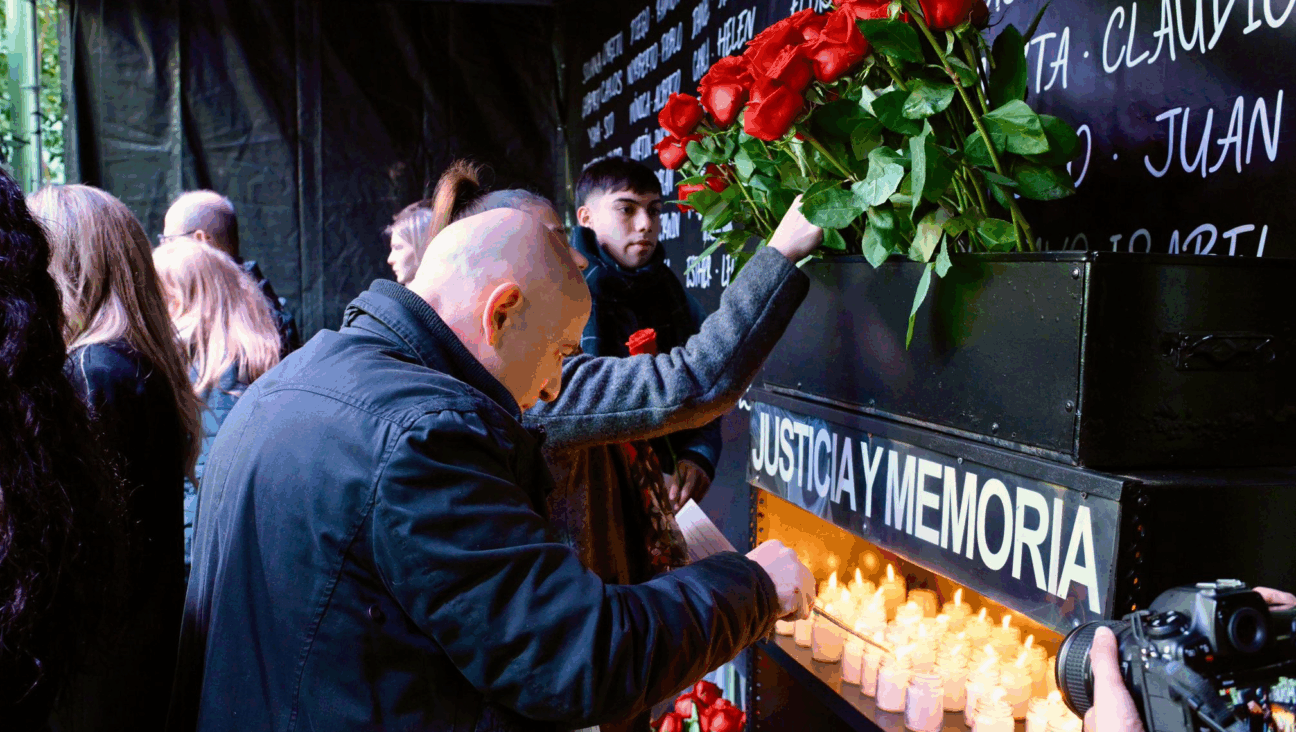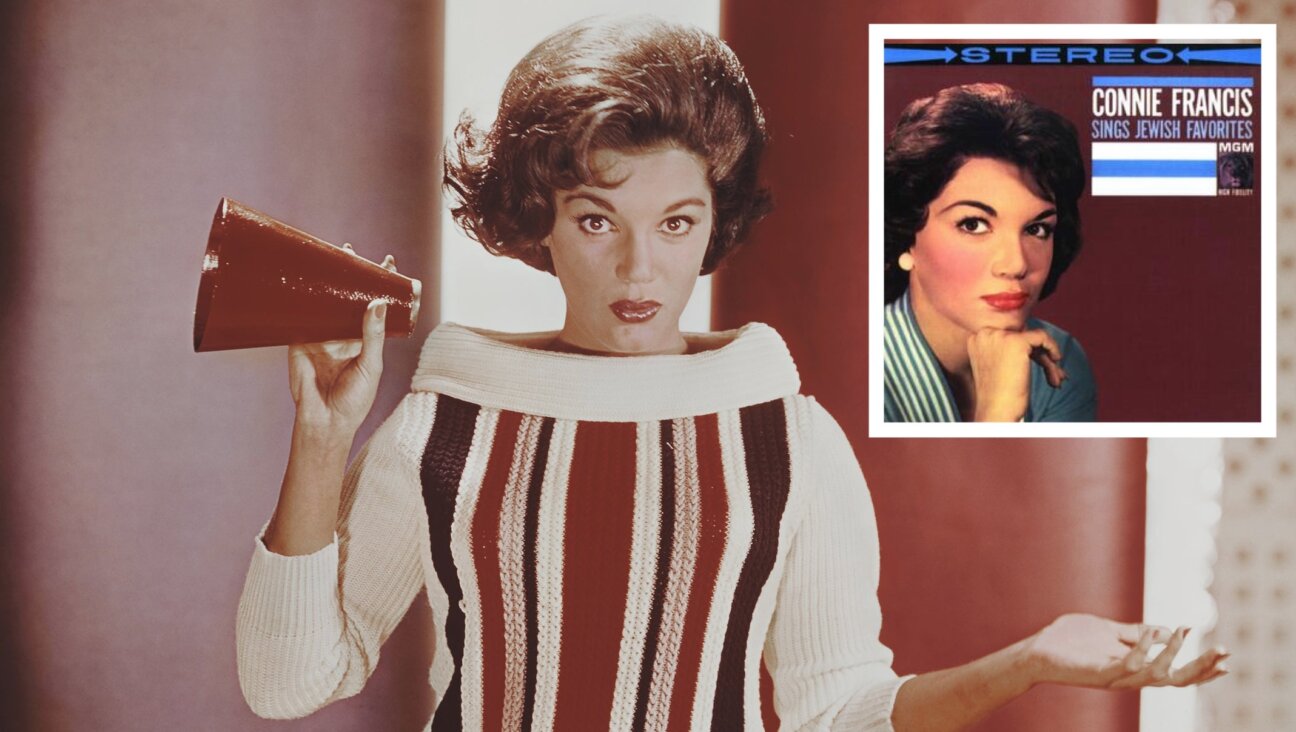I Spent 18 Hours In Tel Aviv’s Bus Station

Image by naomi zeveloff

Image by Naomi Zeveloff
I arrived at the Tel Aviv Central Bus Station at 5:34 a.m. on the rainiest day of the year. The concrete building was just yawning open; shopkeepers placed bourekas onto particleboard pallets and dressed mannequins in discount winter coats as they prepared for the 60,000-plus passengers who would pass through the station that day.
But unlike the travelers who were now slowly trickling into the building, I wasn’t going anywhere.
I spent a total of 18 hours and six minutes in the Tel Aviv Central Bus Station that day. I had been intrigued by the building — a dime-store megamall housed inside the second-largest bus station in the world — since I first stepped inside on a reporting trip to Israel three years ago. I didn’t know at the time that the station is perhaps the most reviled place in the country, seen by most Israelis as a hub of prostitution and crime in Neve Sha’anan, a working class south Tel Aviv neighborhood.
Two nights before my reporting project, an acquaintance warned me against so much as walking near the station after nightfall. I didn’t tell her that I planned to spend an entire day there.
The station was, in fact, first conceived as the salvation of South Tel Aviv. It was proposed by a businessman named Arieh Filtz, son of a famous Israeli baker, as an alternative to the neighborhood’s old and overcrowded station. One of the first examples of a public utility in Israel built by a private entrepreneur, Filtz’s new bus station was quickly approved by the Tel Aviv municipality after the 1967 war.
The station was to be the biggest in the world, a harebrained ambition given the fact that fewer than 3 million people were living in Israel at the time. Filtz commissioned the Israeli architect Ram Karmi, a practitioner of the brutalist style of architecture — known for fortress-like, concrete structures — to create a building in which travelers would become so disoriented that they would get lost among the shops and spend money. Karmi envisioned the station as a “city under a roof,” said Yonatan Mishal, a Tel Aviv artist who gives tours of the bus station. “He wanted to make these huge, disgusting places on purpose.”

Inside the Tel Aviv Central Bus Station Image by Naomi Zeveloff
Six years after it broke ground, the company that built the station was beset by financial troubles and the building was left unfinished and uninhabited — but for a bat population that still lives in the basement — for almost three decades. During that period, it became known as the White Elephant. In 1983, another Israeli entrepreneur, Mordechai Yona, purchased the station. The building finally opened in 1993 with an inaugural ceremony attended by former Prime Minister Yitzhak Rabin. There were chocolates and balloons in the shape of elephants.
In the past 21 years, the building — too large and too loathed to maintain as a profitable shopping center — has again fallen into disrepair. A seven-floor maze of staircases, ramps and cavernous open spaces painted in chalky primary hues, the building is at once claustrophobic and isolating.
Fully three floors of the station are closed to the public, and the rest of the building could shut down forever depending on the outcome of a real estate dispute between shop owners and the station’s proprietors. In the meantime, the station’s new management, under the leadership of Miki Ziv, a former military professional, has sought to refashion the building into a creative hub in Tel Aviv by renting out inexpensive studios to Israeli artists.
During my day in the bus station, I came to realize that as much as Israelis detest the building, it is also a metaphor for Israel itself. The station’s various communities — the artists, the African asylum seekers, the Filipino workers, the hip hop musicians, the Mizrachi shop owners, the soldiers traveling to and from their bases, and even the observant Jews who worship in the station’s two synagogues — all seem to coexist but never truly overlap. And then there are the individuals who, for whatever reason, have chosen to spend their waking hours roaming the building’s concrete halls. For a single day, I was one of them.
I began my journey on the sixth floor, the main depot for the Egged line, which runs buses all over Israel. The floor is surrounded by glass doors, through which people were streaming in and out, some touching a mezuzah on their way inside. Several honeycomb-shaped kiosks were opening for the day, selling hard liquor, chewing gum, and plastic boxes of Ferrero Rocher chocolates. At one, a television broadcasted the news that “Jihadi John,” the ISIS member filmed beheading journalist Steven Sotloff, had been injured in a U.S. air raid.
Sunday morning at the station belonged to the Israeli soldiers, who were heading back to their bases after a weekend at home. They were quickly filling up the floor, lugging green duffel bags, chatting with one another and scrolling through Facebook on their iPhones.
At platform 605 was Daniel Cohen, a 20-year-old soldier in Nahal, one of the main Israeli Defense Forces infantry brigades. He was reading the newspaper and drinking a cup of coffee when I approached, an assault rifle resting on his lap. He had recently been stationed on the Gaza border, he told me, and had arrived in Tel Aviv that morning for a doctor’s appointment. I asked him what for. He hesitated. “I think you are Arabic and you want to catch me and give me to the Arabs in Gaza,” he said with a lazy smile. “Can I see ID please?” (The appointment was for a skin rash.)
I arrived at the Tel Aviv Central Bus Station at 5:34 a.m. on the rainiest day of the year.
Cohen, who had a short beard and a touch of acne, said he came to the station just once a year. “You know there are a lot of whores in this place,” he said, pronouncing the word “horse.” “Whores, bitches. A lot of drugs. I don’t like Tel Aviv.” Years ago, he said, he was solicited by a woman on the seventh floor, but he turned her down. “Maybe it was a guy.”
I asked him about the army. He liked it. “Protect my country, you know.” And what about carrying a gun? “It’s not loaded. You want me to load it?” Pause. “You’re very pretty, you know,” he said, and flicked a small cockroach off the wall.
I bade Cohen farewell and began walking around the sixth floor where I was intercepted by a man with a tangled white beard and a yarmulke. Fringes hung over the waist of his blue jeans. He seemed out of breath. “You know the devil?” he asked me. His eyes were crossed. I nodded. Something about seeing a picture of the devil on the wall. He began smacking a concrete post nearby, where there happened to be a blown up photograph of a baby. He waved a beige booklet of psalms in front of my face. I told him I couldn’t give him a donation, but he handed me the booklet anyway.
I continued walking to one of the honeycomb kiosks, where a pair of women in identical white coats, white jeans, and transparent purses filled with cigarette boxes and tubes of lip gloss were chatting with customers. Twins, I thought. I placed the psalms in my backpack and made my way toward them, introducing myself as a journalist who was writing about the station. They weren’t twins. The one in red lipstick smiled. “We are Philip Morris, the cigarettes,” she said. Could I interview them? They had to ask their supervisor, another young woman who was standing a few yards away. “No,” said the supervisor. “Because it’s Philip Morris.”
I checked my phone. It was now 8:43 a.m. and the coffee I had purchased that morning was catching up with me. I walked to the sixth floor pay toilet, my shekel at the ready. All told, I would spend three shekels on the bathroom that day. But this time an older woman ushered me in through the handicapped entrance, left ajar by another customer. This one was on the station.
The fifth floor of the central station announces itself with a green statue of the number five on a balcony overlooking the fourth floor McDonald’s. The floor is so convincing as a typical office suite that it is possible to forget that it is in the bus station. Possible until one comes across the windowless sex shop or Planet Tattoo with its life-size enamel pirate out front. According to Russian-born Dani Ginzburg, the tattoo artist on the premises who had just finished piercing a pair of army girls when I stopped by, the store is popular with Eritrean and Sudanese migrants, who ask for Jesus or cross tattoos or “I miss Mom.” Palestinian Christians get prison-style tattoos, typically three dots, and the “arsim” — a derogatory term for working-class Mizrachim — just pick something from the binders on the table.

Dani Ginsberg, a worker at Planet Tattoo Image by Naomi Zeveloff
I had an hour before my appointment with Miki Ziv, the general manager of the station, so I walked around the floor. I turned one corner and found myself in a hallway that smelled strongly of urine. It was empty but for a row of seats — movie theater-style folding chairs, a blue recliner, purple airport chairs, and an orange couch, all covered in dust. There was an office nearby with a light on.
Lockers with buckled metal doors lined the peeling walls and a poster of a reclining woman was pasted near the ceiling. I figured it had been long abandoned, but then I came across a break room table where cups of tea and coffee sat next to a coffee maker, a hot pot and a microwave — all plugged in. The microwave’s clock was blinking 10:54, about 45 minutes too fast.
Feeling a bit spooked, I backtracked to the office suite area, where I saw a group of people congregated behind a glass door. A few of them were peeling aluminum foil off of metal trays. It looked like some sort of potluck was underway. I knocked lightly and was ushered inside by a woman in a royal blue shirt who later introduced herself as Maria Christina David. “Welcome to Jesus is Lord Church,” she said brightly.
The church had been in the station for 16 years, serving Filipino Christians who moved to the country — often leaving their families behind, like Maria Christina had done — to work as caretakers for aging Israeli Jews. On the day I visited, there were about a dozen Filipino women on plastic chairs listening to the Sunday sermon. I crept into the back of the room, but the speaker took note of my presence.
“We have a visitor here. Welcome.” I cringed. Maria Christina slipped into the seat next to me and paged through a prayer book until she found the sermon: John 20, about the resurrection of Jesus after his crucifixion. The speaker continued, interspersing the text with her own commentary: “Buddha is dead. Karl Marx of Communism is dead. Muhammad of Islam is dead.” Maria Christina leaned over and whispered the next part, a hint of glee in her voice: “But Lord is still alive.”
Soon after, I found myself down the hall sitting opposite a large wooden desk from Miki Ziv. His office was covered in fake wood paneling hung with architectural prints of the station. An unplugged lava lamp sat coagulating by the window. Ziv had been general manager for the past four and a half years — “Too much, too much,” he said, shaking his head dramatically — and by many accounts he treated the station as his passion project.
He joined the station after 24 years in the army plus a stint in the Ra’anana municipality, and he was well aware of the building’s bad reputation. “A lot of people are afraid to come here because of the people who live here,” he said, referring to the Filipinos and the African asylum seekers. “I found the station not so terrible, not like it looks in the newspapers and on the radio and on TV. I started to think, ‘What can I do to change this image?’ And I told myself the only way to change this bad and ugly image is by art.”

Miki Ziv, general manager of the station, in his office. Image by Naomi Zeveloff
Today, through Ziv’s initiative, 25 artists rent studios in the station. There are several dance and theater companies, and the seventh floor is almost wall-to-wall art installations. The art has helped to buoy the station’s public image. But it’s unclear if it’s enough to save the station from its financial free fall, exacerbated by the real estate dispute between the tenants and the owners. “Maybe if the artists were to stay there for a longer time and there were more of them it would make a change,” Mishal, the bus station tour guide, told me. “The artists change, they move out. They don’t like the station or the vibrations of the fifth floor.”
I asked Ziv how much money the station owed, but he demurred: “We have some problems.” He was more voluble on the question of how to keep the station secure (there are 25 guards at the various entrances) and clean (it’s not easy). The bus station is technically closed from midnight to 4 a.m., so that workers can scour the building before it fills with people again.
After lunch — flatbread with labneh at a makeshift Druze kitchen on the fourth floor — I went back to the fifth floor art studios. On my way, I came across what could have only been a pile of human feces. Just beyond was some optimistic graffiti: “Doing what you like is freedom. Liking what you do is happiness.” It seemed to contradict another message I had seen pasted on the sixth floor hallway that morning: “Freedom is just another word for nothing left to lose.”
The artist quarters were dark but for one studio where a pair of women were absorbed in making costumes. I couldn’t bring myself to interrupt them, so I continued down the hall to Yung Yidish, the cornerstone of the fifth floor cultural life. Knowing I would most likely find myself at the bus station’s Yiddish library at some point during my stay I came bearing a donation: the latest copy of the Yiddish Forverts, sent to my Jerusalem apartment by mistake instead of the English paper. The volunteer on site graciously accepted it, but then told me that Yung Yidish already has a subscription.

Image by Naomi Zeveloff
The center’s 50,000 tomes were balanced precariously throughout the room, on bookshelves, tables and in a bridge formation on a small stage that hosts Yiddish musicians. There was a burbling fishpond and a set of four chairs decorated with the faces of such Yiddish luminaries as Sholem Aleichem. Every few minutes the library rattled from the sixth floor buses rumbling overhead.
Yung Yidish had previously been in central Tel Aviv but moved to the bus station in 2006 for the cheap rent. The proprietor, an actor named Mendy Cahan who looks like Doc Brown from “Back to the Future,” said that the location is also symbolic. “Having immigration in the Yiddish memory, I feel very connected to the surrounding faces of political asylum seekers and immigrant workers, people who come with some ambition to try to make their life better,” he told me over pita and hummus at a table near the stage. “When I walk around the street I see New York in the ’20s. I see them buying and selling and wanting to get along in life.” Then there is the fact that the bus station is home to people on the margins of Israeli society, just as Yiddish has always been a marginal language in the Jewish state, suppressed in favor of Hebrew.
I asked Cahan if he ever made contact with Israel’s modern day immigrants in the station. He said that he hopes to do a collaborative project with the Filipino kindergarten next door, perhaps a dance routine set to a Yiddish song. As for the Eritreans and Darfurians, sometimes a lost traveler wanders into the library. “I take them by the hand and bring them to the right place,” he said. When he is at the library late at night, he leaves a light on near the window. “I have this vision of a weary traveler who could come in and make himself coffee and be in silence for a moment.”
Around 5 o’clock I set out for the African Refugee Development Center, one of two organizations in the station serving the asylum seekers — the other is a health clinic. I made my way downstairs and walked the length of the fourth floor. But the shop numbers never lined up with the ARDC address. Finally, a man pointed me in the right direction. It was outside, around the corner.
I stepped through the glass doors and into the humid Tel Aviv night. It had stopped raining long before but the ground was still wet. I hadn’t been outside in 12 hours. Beyond the flattening glare of the station’s fluorescent lighting, the cityscape seemed both more vivid and more surreal than I had remembered, the palm trees cutting stark silhouettes against a purple sunset. I walked to the ARDC front office, a sparse white room with a green potted plant near a stack of brochures: “Applying for Refugee Status in Israel.” The room was populated by men who had come for appointments after work. I sat down next to ARDC’s translator, a 29-year-old Sudanese woman who only gave her name as Fryal.
I could no longer tell what was real and what was fake, who was harmless and who was sinister.
Fryal explained that migrants learn about ARDC from other asylum seekers once they are dropped off in Levinsky Park, just across the street from the station. They come to the organization for help with visa applications, language training, higher education, and even therapy. Most of the Eritreans and Darfurians in Israel are fleeing political violence at home, but Israel is one of the only countries in the world that does not accept their claims for political asylum. So the vast majority of the 50,000 immigrants are left in a legal limbo, renewing their temporary visas — which stipulate that they are not allowed to work inside the country — every few months. When the Israeli high court announced recently that it was closing a Negev detention center, the asylum seeker community rejoiced. But the ruling still did not resolve their legal status.
“It is really hard for everyone who is living here,” Fryal told me.
After I finished speaking with Fryal, I reluctantly walked back inside the station. It was nearly dinnertime and I had only made it through two floors.
The fourth floor is the commercial heart of the station, and possibly the truest expression of the founder’s vision for the building as a bus station inside a mall instead of a mall inside a station. But instead of high-end shops and fashion shows (which the station did host when it first opened), the fourth floor’s stores cater to Tel Aviv’s down and out, hawking mass-produced trinkets, fast food, and inexpensive clothing made of synthetic fabrics. There are numerous reasons why the station’s mall never caught on with the city’s elite, but the most important one might be that it was a full 26 years between the time the station broke ground and when it opened to the public. A mall designed in 1967 could never satisfy the shoppers of 1993. “The year that it opened, it was too late,” Ziv told me. “We had a lot of malls that were more in use, more modern. People didn’t use this place.”
And yet I was entranced by the fourth floor and its cut-rate garden of delights. In addition to clothes and kitchenware, I found such items as: The Playset Secret Mission Anti Terror Squad Combat Mission Toy, consisting of a plastic grenade, handcuffs, handgun and a calculator as well as a shoddily painted GI Joe doll, all wrapped in a cellophane bag, 20 shekels at an unnamed toy stand; knockoff Victoria’s Secret thong underwear, 7 shekels at Donna Victoria; a license-plate-sized sign that reads “Christ is the Head of this House,” 23 shekels at Pinoy Pinay; dog toys in the likeness of former Iranian President Mahmoud Ahmadinejad or assassinated Libyan President Muammar Gaddafi, 62 shekels at Fin and Feather; a two-headed animatronic lamb with one side dressed as a groom and the other as a bride, 50 shekels at another unnamed toy stand; a Bob Marley T-shirt in one of five different designs, 50 shekels at an unnamed head shop; a backpack that unzips to reveal an image of a woman grabbing her own ass with red fingernails, 250 shekels at Mad Men, a hip hop outfitter.

Image by Naomi Zeveloff
Dinner was a rice bun in the Filipino section in the company of two Tel Aviv friends who had promised to check up on me at the station. After eight and a half hours in the building — alone, but never really alone — their presence seemed like a mirage. I asked them to join me for the most treacherous part of my journey, to the three empty floors at the bottom of the station. Two days earlier, I had gone on a private tour with Mishal, who took me to the abandoned movie theaters on the second floor — open for a few months or a few years in the 1990s, depending on whom you asked — as well as to a now-deserted depot for local buses, the bat sanctuary, and a nuclear fallout shelter.
My friends accompanied me to the end of the fourth floor, past the Filipino karaoke station, where there was a ramp leading to the three shuttered floors. At one juncture there was a dusty Egged sign with directions to the Israeli buses to Cairo — another remnant from the station’s past. I ushered my friends through a closed white door and into a urine-scented hallway made up of glass offices; one of them was full of rusty pinball machines. We continued until we reached a balcony that overlooked the movie theater entrance. A silhouette statue of Charlie Chaplin balanced on a beam overhead. Inside were the theaters I had seen a few days earlier by flashlight, some perfectly preserved, others with ripped screens and overturned seats. Beyond the theaters was the depot where Tel Aviv’s local buses used to come and go. It was closed because it was built without proper ventilation and the air became dangerously polluted.
We lingered for a few moments, but something told us not to go further. We turned around and walked back down the hallway, passing through white doors. Suddenly a pair of men with shaved heads appeared behind us. “What are you doing here?” one shouted in Hebrew. Nothing, we said.
My friends had to get back to Tel Aviv for a party, so I dropped them off on the fourth floor and returned to the third, where there was a small shoe market. I had been looking to purchase boots since I had arrived in unexpectedly rainy Israel, but now, under the fluorescent glare, I couldn’t tell which were name brand and which were knockoffs. Feeling disoriented, I took the escalator back upstairs to the seventh floor to check out the art exhibit Ziv had touted.
The lights were off on the seventh floor, but I could still see the artwork. There was a tangle of multicolored wires like a fun house spider web, a floor-to-ceiling cartoon man spewing a rainbow, and a skull and crossbones encircled by the phrase “We’re More Hardcore Than You.” As my eyes adjusted to the dark, I realized that I was not alone on the floor. A man leaned on a silver railing near the glass window as though waiting for a phantom bus. A few paces away stood another man, and another. After a moment, yet another man entered the floor and began walking in my direction. He seemed to be staring straight at me. I scooted next to the silver railing, hoping to take some refuge in the presence of the first man. But then he turned and stared too. Suddenly, I had the same disoriented feeling that I had had in the shoe market. I could no longer tell what was real and what was fake, who was harmless and who was sinister. My heart pumping, I jetted back to the sixth floor, where I had begun my day. That was where I would spend the rest of the evening, I told myself. That’s where I felt safe.

Image by Naomi Zeveloff
Walking through the sixth floor’s well-lit corridors, I realized that I had missed rush hour. There were a few travelers in the station — mostly soldiers and tourists — but everyone else, like me, seemed to be there for some other reason. In the morning, I had managed to blend in, but now I felt conspicuous.
And now I was the one being approached. A handsome, dark-haired man in a yarmulke wanted to know if I needed assistance navigating the electric signboard posting the upcoming buses. Could he help me find mine? Another wondered why I was writing so feverishly in my notebook. Was there something he could help me with? A third stared at me as he paced the floor in a beige suit, a plastic bag dragging on one of his patent leather shoes. He finally sat down. Where was I going? He wanted to know. I told him, in English, that I didn’t speak English.
I was sitting at door 613, not far from where I had met Daniel Cohen, when I made eye contact with an Orthodox woman who had been pacing the floor, asking soldiers for money. She sat down next to me. Up close, I could see that she was missing her canines and that her hair, pushed back by a white headband, was glued into her scalp. She had false eyelashes in the corner of her eyes. Could I spare any money? She and her child were in a tough spot. I paused for a moment. A wicked thought came to me. I would give her money if she would agree to be interviewed. She looked startled, and said that her parents would lose their minds if they found out. I told her she could be anonymous. No, she said, she couldn’t do it. Then I couldn’t give her any money, I replied. She smiled, thanked me and got up to leave.
Left alone again, I felt sick. What had I done? I had broken one of the key rules of journalism — paying for stories — and ruptured my own ethical standard to give charity without strings attached. I wrote in my notebook: “I am a terrible person.” Later, I would ask Mishal about my interaction. Was it possible that the station had seeped into my psyche? He laughed. “It is a terrible atmosphere,” he said, adding that he avoids taking buses from the station even though he gives tours there. “Everyone is unpleasant, there is a lot of violence, there are stories about gangs asking for protection money. And you know, I think when you are living a lot of your day in this tension, of course it affects you.”
Trying to shake the feeling, I approached a group of young women on their way to Jerusalem to ask them for their opinions about the station. But then their bus pulled up. I looked around for other people to talk to. Nearby, a young couple was making out wildly. A man slumped over his beer bottle. I went to the bathroom instead, my last shekel of the evening.
I decided to take a stroll around the sixth floor and saw that the Orthodox woman was seated at a table by herself eating a boureka. I pulled my wallet out of my knapsack and took out 15 shekels and handed it to her. “Thank you, God bless,” she said. Salvation.
I saw the Orthodox woman one last time that evening, outside one of the convenience stores where a group of men were watching a soccer match. Our eyes met again and I smiled. “You know,” she said, “I knew you would come back to me. I could tell you are a good woman. When you told me to go away, I didn’t understand it, and when you came back to me I knew you would.” I told her that I was sorry, that I didn’t normally behave that way. We chatted for a few more moments. “Maybe God will help me,” she said. Then she kissed my cheek — she smelled strongly of powder — and went on her way.
I continued my lap around the sixth floor, and spied another piece of enigmatic graffiti: “Progressive psy trance.” It was 11:20 p.m. and the floor had settled into a hushed rhythm. There were several dozen people left, sitting, pacing, waiting for the final buses of the evening. I had wanted to be the last person to exit the station, but I now realized I couldn’t outlast the building’s night dwellers. They had carved out a permanent place here, in this place that belonged to no one at all. I waited for a sign that I should leave, but none came. It seemed that the station had accepted me, too.
Naomi Zeveloff is the Forward’s Middle East correspondent. Contact her at [email protected], twitter @naomizeveloff







